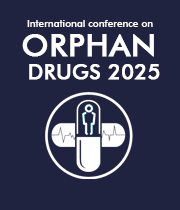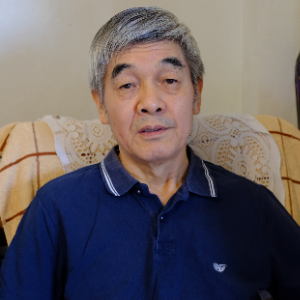Title : The effect of Eupalinolide B on amyotrophic lateral sclerosis: A case report
Abstract:
Objective: To investigate the effect of Eupalinolide B (EB) on amyotrophic lateral sclerosis (ALS).
Case description: The 66-year-old femele patient experienced progressive right upper limb weakness and slowed speech speed in November, 2021. One month later, weakness of lower limbs and left upper limb followed. Physical examination and neurologic check showed slight interosseus atrophy between thumb and index finger in both hands. Biceps reflex, triceps reflex, knee reflex and ankle reflex graded +++. Ankle clonus and Hofman’s sign showed +. Babinski’s sign was negative. Mascular tension in four limbs graded ++ according to ashworth standard. Electromyogram showed neurogenic injury in cervical and lumbar section. Pulmonary function and cerebral spinal fluid test were normal. Based on the above data, the patient was diagnosed clinicaly as ALS. Since then, Riluzole 50 mg twice daily and Butylphthalide soft capsule 0.2 g thrice daily were prescribed. The disease progressed steadily. The mascular strength of four limbs worsened. Eating and getting up could not be accomplished by herself. Constipation was experienced and sometimes glycerol was used as lubricant. ALSFRS-R went down all the way and scored 17 before experiment.
Experiment: In January 2023, EB dissolved in dimethyl sulfoxide (DMSO) was orally administered 20 mg daily. Riluzole 50 mg twice daily and Butylphthalide soft capsule 0.2 g thrice daily were continued. Before experiment, neurologic check was repeated. Neural reflexes showed the same results as above but ankle clonus seemed stronger. The mascular tension in upper limbs graded +. But it was abnormally lower in lower limbs. She could walk at most 5 meters per day with caregiver’s help. Written consent was signed using an inked thumbprint in lieu of sigature. The experiment was authorized by Ethical Committee of Shanxi Provincial Hospital.
Results: Three days after EB administration, the abnormally lower mascular tension of lower limbs turned to basically normal. At the same time, the mascular strength of lower limbs improved. She could walk under assistance for about 45 meters. Sinteen days after EB administration, ankle clonus disappeared. Biceps reflex, triceps reflex, knee reflex, ankle reflex graded ++. Hofman’s sign showed +. Babinski’s sign remained negative. Constipation resolved and glycerol has not been used since experiment. ALSFR-R score stopped declining and scored 19 30 days since the start of experiment. As DMSO is irritating and was unpleasant when orally administered, the patient refused to accept further treatment with EB 30 days after the beginning of experiment. About 10 days after discontinuation of EB, muscular tension of lower limbs went back to abnormally low .Muscular strength decreased and ALSFR-R worsened.
Discussion: EB might be effective on ALS and deserves further investigation .
Key words: Eupalinolide B; amyotrophic lateral sclerosis; sesquiterpenes, Eupatorium Lindleyanum, Chinese herbs.
Audience Take Away Notes:
- As far as I know, this is the first clinical report describing the application of EB in ALS patient
- As EB was reported to restore the nissl body in motor neuron of ALS animal model and nissl body is a special apparatus in motor neuron, EB might have special role to pathalogical mortor neurons in ALS patients
- EB deserves further experiment with large sample to investigate its efficacy, safety. If it is effective and safe for ALS patient, pharmacokinetics and medication route should be researched


